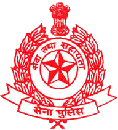December 10th, 1979 was a major moment in Taiwan's history. When it took place, it was hardly noticed internationally, but since then it has been recognized as an important turning point in the island's recent transition to democracy. It galvanized both the Taiwanese people in Taiwan as well as the overseas Taiwanese community into political action.
The movement subsequently formed the basis for the democratic opposition of the DPP and its overseas support network of Taiwanese organizations in North America and Europe. Virtually all leading members of the present-day democratic opposition had a role in the event, either as defendants or as defense lawyers.
Below, we present a summary of the event and its aftermath, while a full account is given in our publication The Kaohsiung Tapes (60 pages, 1300 Kbytes, Acrobat PDF-file), which carries a translation of sound tapes made during the evening of 10 December 1979. Extensive present-day coverage of the commemorations of the Kaohsiung Incident in Taiwan can be found in the Taipei Times.
The now well-known event of the evening of 10 December 1979 started out as the first major human rights day celebration on the island. Until that time the authorities had never allowed any public expression of discontent, but in the summer of 1979 a slight thaw had set in, during which two opposition magazines were established: Formosa Magazine, headed by veteran opposition Legislative Yuan-member Huang Hsin-chieh, and The Eighties, headed by up and coming opposition leader K'ang Ning-hsiang.
Formosa Magazine quickly became the rallying point for the budding democratic movement. During the fall of 1979, it became increasingly vocal, and it was only natural that it would use 10 December as an opportunity to express its views on the lack of democracy and human rights on the island. When the day arrived,


